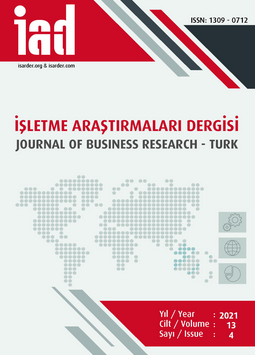Lojistik Faaliyetlerde Antrepoların Etkinliğinin Veri Zarflama Analizi ile Belirlenmesi
Determining the Efficiency of Entrepots in Logistics Activities by Data Envelopment Analysis
Author(s): Aynur AcerSubject(s): Business Economy / Management, International relations/trade, Methodology and research technology, Transport / Logistics
Published by: Orhan Sağçolak
Keywords: Entrepots; Data Envelopment Analysis (DEA); Efficiency; Logistics Activities; Multi Criteria Decision Making (MCDM);
Summary/Abstract: Purpose – Entrepots play a considerable role as intermediate points in the realization of international trade, import and export transactions in logistics activities. The concepts of efficiency and productivity come to the fore when evaluating the performance of entrepots. Every business demands to use its resources in the most optimal way to achieve different and better goals than the previous year. This study primarily aims to determine the quantitative criteria used to evaluate the efficiency of entrepots and to evaluation the bonded warehouses according to these criteria. Design/methodology/approach – Data Envelopment Analysis (DEA), which is a useful and widely used technique in the literature, was used to evaluate the efficiency of entrepots in the study. The reason why data envelopment analysis is preferred as a method is that this method, like other multi-criteria decisionmaking methods, not only ranks the alternatives according to performance, but also makes suggestions for inefficiency alternatives. Determined in the light of expert opinions, the criteria of bonded warehouse area, the number of employees, the number of forklifts, the number of pallet trucks, the number of declarations, the number of trucks / containers, the amount of handling freight and the amount of goods accepted were used as evaluation criteria in the study. In the study using the data of 2019, these data were requested from the entrepots face to face and by mail between 01 February 2020 and 01 July 2020. Findings – Firstly, the efficiency of 35 entrepot, from which 2019 data were obtained, was analyzed with input-oriented DEA-CCR and BCC methods. Afterwards, hierarchical clustering technique, which is one of the clustering analysis method, was used to identify warehouses with homogeneous characteristics and it was determined that 31 entrepots were homogeneous. In the last step, their efficiency was reevaluated for these 31 entrepots using input-oriented DEA-CCR and BCC methods. As a result of both analyzes, entrepot 7, 9, 10, 15, 17, 18, 20, 23, 24, 25, 28, 31, 32, 33, 34 and 35 were found to be relatively efficiency. As a result of DEA analysis, efficiency and inefficiency entrepots were determined and suggestions were made for inefficiency entrepots. Discussion – Each of the quantitative criteria used in the evaluation of the efficiency of entrepots, such as the warehouse area, the number of employees, the number of forklifts, the number of pallet trucks, the number of declarations, the number of trucks/containers, the amount of handling freight and the amount of goods accepted into entrepots plays an important role in determining the operational efficiency of entrepots.
Journal: İşletme Araştırmaları Dergisi
- Issue Year: 13/2021
- Issue No: 4
- Page Range: 2976-2989
- Page Count: 14
- Language: Turkish

